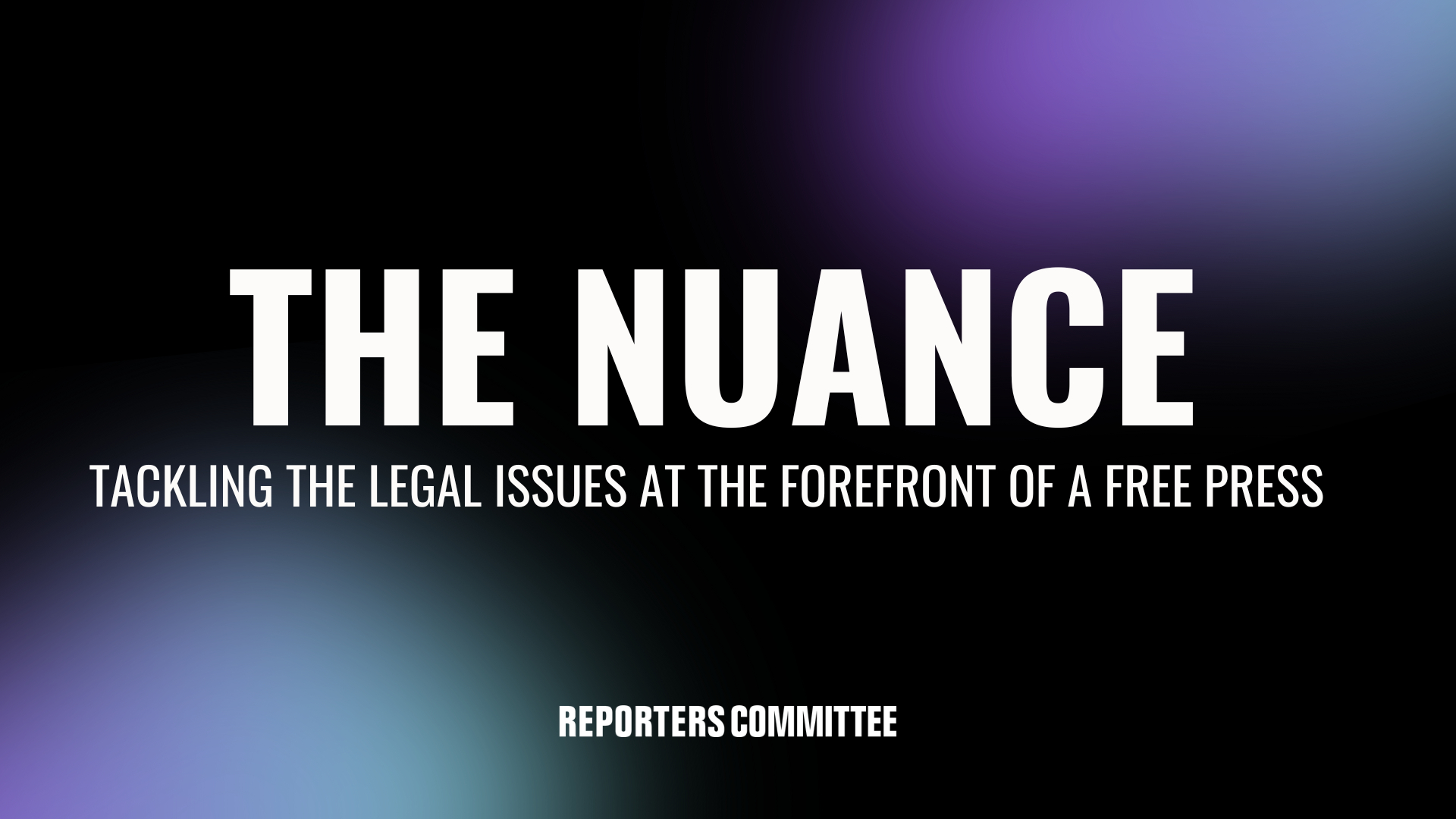DOJ revises prosecutors’ manual on news media guidelines

If you like this post, sign up to get The Nuance newsletter delivered straight to your inbox every Sunday night!
Last week, the U.S. Justice Department published a revised section of the “Justice Manual,” a deskbook for prosecutors, providing direction for DOJ personnel on implementing the news media guidelines, the policy governing when and how the department can seek records from or of journalists. That policy, codified at 28 C.F.R. 50.10, was significantly revised in 2022 to bar the use of subpoenas or other forms of legal process against journalists acting within the scope of newsgathering, save in very limited circumstances. (The Reporters Committee for Freedom of the Press helps coordinate discussions between senior DOJ officials and media representatives that provide input on the guidelines and their implementation.)
The revised Justice Manual section — 9-13.400 — includes some notable points of interest. We’ll eventually do a deep-dive analysis on the whole thing, but there’s one interesting addition that speaks to how the guidelines could apply in edge cases, where certain acts of newsgathering (asking a source for government secrets, for instance) could technically be seen by prosecutors as a violation of federal law.
That issue arises in the context of several federal statutes where the gathering or disclosure of information by a journalistic source is itself a crime. Examples include the Espionage Act, which applies to the transmission of national defense information to someone not authorized to receive it; the Computer Fraud and Abuse Act; and the general theft of government property statute, 18 U.S.C. 641.
All of those laws have been used to prosecute journalistic sources for providing information to reporters. And aggressive prosecutors could characterize the reporter in that situation as, among other things, a co-conspirator in order to secure subpoenas, court orders, or search warrants against the journalist, but where the real investigative focus is the source. (That’s what happened in 2010, when prosecutors obtained a search warrant for journalist James Rosen’s private email account in the Stephen Kim leak case.) The danger is that those kinds of record demands can identify other sources in unrelated stories, and give the government improper visibility into the newsroom.
The 2022 revisions to the guidelines seek to limit that possibility in a few ways. First, they define “newsgathering” to include the receipt, possession, and publication of government material, including classified information. Being within the “scope of newsgathering” will bar the use of investigative tools against journalists, except to authenticate already public information, when the journalist consents, or in exigent circumstances.
But, second, they include some important limiting language in the exceptions for when journalists are not acting within the scope of newsgathering (examples include when the government seeks only financial records from a newspaper or is investigating a non-journalist employee). Arguably the most important of those is the “(d)(1)(i)” exception for when a journalist is suspected of a crime like child pornography or embezzlement that is unrelated to newsgathering.
There, the department can use subpoenas and the like if the reporter is not acting within the scope of newsgathering and is a “subject or target of an investigation and suspected of having committed an offense.” In the national security leak example above, the concern is that a prosecutor could argue that a journalist who affirmatively solicits classified information goes beyond passive receipt, and is therefore not acting within the scope of newsgathering. The prosecutor then argues the journalist is in criminal cahoots with the leaker, and seeks a demand for the reporter’s emails, call logs, or the like to investigate the source.
That’s where the phrase “subject or target of an investigation and suspected of having committed an offense” becomes central. “Subject” and “target” are terms of art, defined in a separate section of the Justice Manual, and “subject” is broad. It refers to a person “whose conduct is within the scope of the grand jury’s investigation.” (“Target” is more, well, targeted to a person who is a “putative defendant,” meaning there is “substantial” evidence tying them to a crime.)
The “suspected of having committed an offense” language does not, however, appear elsewhere in the 50.10 regulation or the Justice Manual. And it is important that it be read to apply to “subject” as well as “target,” as any journalist asking a source for classified information could be argued to be a “subject” of a grand jury investigating the leak.
The revised Justice Manual does exactly that. It explicitly clarifies that the (d)(1)(i) exception cannot be used to issue legal process “to a member of the news media whose conduct falls within the scope of the early stages of a grand jury investigation, but who is not yet suspected of criminal wrongdoing.”
To be sure, as we’ve noted, this is not an airtight fix to the problem outlined above. It is, however, a strong signal to prosecutors that if they want to seek a reporter’s records under the (d)(1)(i) exception, they need to have a good faith belief that the reporter has actually broken the law.
The Technology and Press Freedom Project at the Reporters Committee for Freedom of the Press uses integrated advocacy — combining the law, policy analysis, and public education — to defend and promote press rights on issues at the intersection of technology and press freedom, such as reporter-source confidentiality protections, electronic surveillance law and policy, and content regulation online and in other media. TPFP is directed by Reporters Committee attorney Gabe Rottman. He works with RCFP Staff Attorney Grayson Clary and Technology and Press Freedom Project Fellow Emily Hockett.